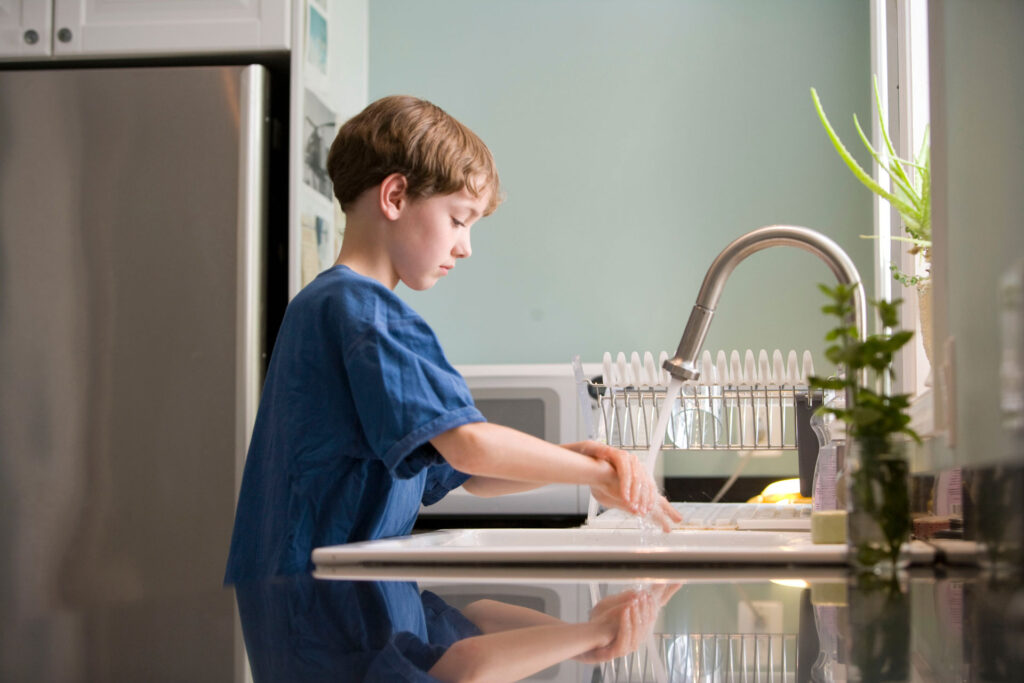Handwashing has always been one of the most effective ways to fight germs and prevent the spread of disease. The Centers for Disease Control (CDC) recommends we wash our hands often to help reduce the threat of contracting or spreading the virus. Regular handwashing is one of the best steps we can take to keep ourselves healthy.
Unwashed hands are ideal conduits for spreading germs. When you touch your eyes, nose, or mouth, you can infect yourself or spread germs to others. It’s important to wash your hands under the following circumstances:
- BEFORE preparing food or eating
- BEFORE touching your face
- AFTER using the bathroom
- AFTER changing a diaper
- AFTER blowing your nose, sneezing, or coughing
- AFTER touching animals or pets
- AFTER treating wounds or caring for a sick person
- AFTER leaving a public place
The key to effective handwashing is to do it properly. When washing your hands, follow these six steps:
- Wet your hands with clean, running water. Studies show the temperature of the water doesn’t matter; it may be either warm or cold.
- Apply soap to your hands and wrists.
- Lather your hands by rubbing them together briskly. Don’t forget the backs of your hands, wrists, spaces between your fingers, and fingernails.
- Scrub your hands for a minimum of 20 seconds. In lieu of counting, you can sing “Happy Birthday” twice. (You don’t have to do this out loud!)
- Rinse your hands well under clean, running water.
- Dry your hands using a clean towel or air dry them.
Though soap and water work best, alcohol-based hand sanitizer is a good option if you don’t have access to a sink. It won’t remove all types of germs, but offers better protection than doing nothing. Be sure to look for a hand sanitizer that contains at least 60 percent alcohol. Apply the gel to your palm, rub your hands together, and make sure the gel covers all surfaces of your hands and fingers until they are clean and dry. Like hand washing, this should take about 20 seconds.

